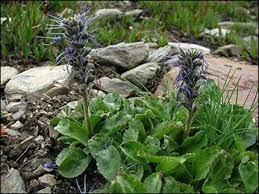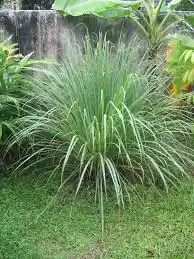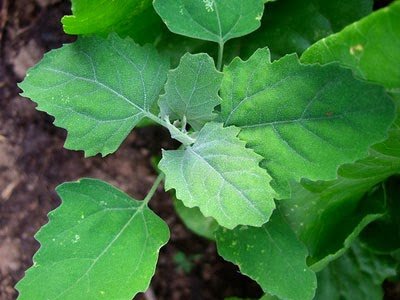Plumeria Nutrition Requirements
Nutrition required by Plumeria at each stage of its life cycle.
SOIL PREPARATION

Soil Preparation
Soil preparation is essential for the successful growth of Plumeria, commonly known as Champa. Plumerias thrive in well-draining soil with adequate nutrients.
Here's a soil preparation method and nutrition requirements for Plumeria at the soil preparation stage:
### Soil Preparation Method:
1. **Site Selection**:
- Choose a sunny location with at least 6 hours of direct sunlight daily for optimal growth.
- Ensure the site has good air circulation to prevent fungal diseases.
2. **Soil Testing**:
- Conduct a soil test to determine pH and nutrient levels.
- Plumerias prefer slightly acidic to neutral soil with a pH range of 6.0 to 7.0.
3. **Soil Amendment**:
- If the soil pH is too high or low, amend it accordingly by adding lime to raise pH or sulfur to lower pH.
- Incorporate organic matter such as compost or well-rotted manure into the soil to improve its structure and fertility.
4. **Drainage**:
- Ensure proper drainage by amending heavy clay soils with coarse sand or perlite.
- Plant Plumerias in raised beds or mounds if the soil is poorly drained.
5. **Soil Preparation**:
- Dig a hole or prepare a planting bed that is at least twice as wide and deep as the root ball.
- Break up any clumps of soil and remove rocks, weeds, and debris.
- Loosen the soil in the planting area to a depth of 12 to 18 inches (30 to 45 cm).
6. **Planting**:
- Place the Plumeria plant in the center of the hole or planting bed at the same depth as it was in the nursery container.
- Backfill the hole with the amended soil, gently firming it around the root ball.
- Water thoroughly to settle the soil around the roots.
### Nutrition Requirements:
1. **Nitrogen (N)**:
- Nitrogen is essential for healthy foliage growth and overall plant vigor.
- Use a balanced fertilizer with a higher ratio of nitrogen (N) during the growing season to promote lush foliage.
2. **Phosphorus (P)**:
- Phosphorus promotes root development, flowering, and fruiting.
- Apply a fertilizer with a higher ratio of phosphorus (P) during the soil preparation stage to encourage strong root growth.
3. **Potassium (K)**:
- Potassium enhances disease resistance and overall plant health.
- Use a fertilizer with a balanced ratio of potassium (K) to support overall plant growth and development.
4. **Micronutrients**:
- Micronutrients such as iron, manganese, zinc, and copper are essential for various biochemical processes in Plumeria plants.
- Use a fertilizer containing micronutrients or apply micronutrient supplements as needed to prevent deficiencies.
5. **Slow-Release Fertilizer**:
- Consider incorporating a slow-release fertilizer into the soil during preparation to provide a steady supply of nutrients over time.
6. **Organic Matter**:
- Incorporate organic matter such as compost or well-rotted manure into the soil during preparation to improve soil fertility and structure.
7. **Mulching**:
- Apply a layer of organic mulch around the base of the plant to conserve soil moisture, suppress weeds, and add nutrients to the soil as it decomposes.
By following these soil preparation methods and providing the necessary nutrients, you can create an optimal growing environment for Plumeria, ensuring healthy growth and abundant flowering. Regular monitoring of soil conditions and plant health will help maintain optimal nutrition for Plumeria plants.
Early Growth (Germination to Establishment)

Early Growth
During the early growth stage of Plumeria, proper nutrition is crucial for establishing healthy roots and promoting vigorous vegetative growth.
Here are the key nutrition requirements for Plumeria during the germination to establishment stage:
1. **Nitrogen (N)**:
- Nitrogen is essential for promoting leaf and stem growth during the early stages of Plumeria growth.
- Provide a balanced nitrogen fertilizer to support vigorous vegetative growth without promoting excessive leafiness.
- A fertilizer with a higher ratio of nitrogen (N) compared to phosphorus (P) and potassium (K) is suitable for promoting early growth.
2. **Phosphorus (P)**:
- Phosphorus plays a critical role in promoting root development and overall plant growth.
- Ensure an adequate supply of phosphorus to support strong root establishment and early plant growth.
- Use a fertilizer with a balanced ratio of phosphorus (P) to nitrogen (N) and potassium (K) to promote overall plant health.
3. **Potassium (K)**:
- Potassium is important for promoting overall plant vigor and enhancing stress tolerance.
- Provide a balanced supply of potassium to support early growth and development.
- A fertilizer with a balanced ratio of potassium (K) to nitrogen (N) and phosphorus (P) is suitable for promoting overall plant health and vigor.
4. **Micronutrients**:
- Micronutrients such as iron, manganese, zinc, and copper are essential for various biochemical processes in Plumeria plants.
- Ensure a balanced supply of micronutrients to support healthy growth and development during the early stages.
- Use a fertilizer containing micronutrients or apply micronutrient supplements as needed to prevent deficiencies.
5. **pH Balance**:
- Maintain the soil pH within the optimal range (slightly acidic to neutral, pH 6.0 to 7.0) to ensure proper nutrient availability to the plants during the early growth stage.
- Regularly monitor soil pH and adjust as needed to prevent nutrient imbalances and deficiencies that could affect early growth and development.
By providing the right balance of nutrients during the early growth stage, you can promote healthy root development and vigorous vegetative growth in Plumeria plants. Regular monitoring of plant growth and soil conditions, along with appropriate fertilization practices, will help ensure optimal nutrition for Plumeria during this critical stage of establishment.
Tillering Stage (Shoot Development)

Tillering Stage
During the tillering stage, also known as shoot development, Plumeria requires specific nutrients to support healthy growth and development.
Here are the key nutrition requirements for Plumeria during this stage:
1. **Nitrogen (N)**:
- Nitrogen is essential for promoting vigorous shoot growth and lush foliage.
- Provide a balanced nitrogen fertilizer to support robust shoot development without promoting excessive leafiness.
- Nitrogen is particularly important during this stage to encourage strong vegetative growth and the formation of new shoots.
2. **Phosphorus (P)**:
- Phosphorus plays a crucial role in promoting root development and overall plant growth.
- Ensure an adequate supply of phosphorus to support healthy shoot development and strengthen the plant's overall structure.
- Phosphorus is important for promoting root growth, which is essential for supporting the development of new shoots during the tillering stage.
3. **Potassium (K)**:
- Potassium contributes to overall plant vigor and enhances stress tolerance.
- Provide a balanced supply of potassium to support healthy shoot development and improve the plant's ability to withstand environmental stresses.
- Potassium is important for promoting strong cell walls and overall plant structure, which is essential for supporting the growth of new shoots.
4. **Micronutrients**:
- Micronutrients such as iron, manganese, zinc, and copper are essential for various biochemical processes in Plumeria plants.
- Ensure a balanced supply of micronutrients to support healthy shoot development and overall plant health.
- Micronutrients play important roles in enzyme activities and other physiological processes that are essential for promoting vigorous shoot growth during the tillering stage.
5. **pH Balance**:
- Maintain the soil pH within the optimal range (slightly acidic to neutral, pH 6.0 to 7.0) to ensure proper nutrient availability to the plants during the tillering stage.
- Regularly monitor soil pH and adjust as needed to prevent nutrient imbalances and deficiencies that could affect shoot development and overall plant health.
By providing the right balance of nutrients during the tillering stage, you can promote healthy shoot development and overall plant vigor in Plumeria. Regular monitoring of plant growth and soil conditions, along with appropriate fertilization practices, will help ensure optimal nutrition for Plumeria during this critical stage of shoot development.
Flowering

Flowering
During the flowering stage, Plumeria requires specific nutrients to support the development of healthy blooms and overall plant health.
Here are the key nutrition requirements for Plumeria during the flowering stage:
1. **Potassium (K)**:
- Potassium is crucial for promoting flower bud formation, development, and overall flower quality.
- Provide a balanced potassium fertilizer to support robust flowering and improve the color, size, and longevity of blooms.
- Potassium also enhances the plant's resistance to diseases and stresses during the flowering stage.
2. **Phosphorus (P)**:
- Phosphorus plays a vital role in promoting flower formation and development.
- Ensure an adequate supply of phosphorus to support healthy flower bud initiation and development.
- Phosphorus also contributes to flower color intensity and overall flower quality during the flowering stage.
3. **Magnesium (Mg)**:
- Magnesium is essential for chlorophyll production and overall plant energy metabolism.
- Provide a balanced supply of magnesium to support healthy flower development and overall plant vigor during the flowering stage.
- Magnesium deficiency can lead to yellowing of leaves and reduced flower production in Plumeria.
4. **Micronutrients**:
- Micronutrients such as iron, manganese, zinc, and copper are essential for various biochemical processes involved in flower formation and development.
- Ensure a balanced supply of micronutrients to support healthy flower development and overall plant health during the flowering stage.
- Micronutrient deficiencies can negatively impact flower color, size, and quality in Plumeria.
5. **Calcium (Ca)**:
- Calcium plays a role in cell division and cell wall formation, which are essential for flower development and structure.
- Provide an adequate supply of calcium to support healthy flower development and overall plant health during the flowering stage.
- Calcium deficiency can lead to poor flower formation and reduced flower quality in Plumeria.
6. **pH Balance**:
- Maintain the soil pH within the optimal range (slightly acidic to neutral, pH 6.0 to 7.0) to ensure proper nutrient availability to the plants during the flowering stage.
- Regularly monitor soil pH and adjust as needed to prevent nutrient imbalances and deficiencies that could affect flower development and overall plant health.
By providing the right balance of nutrients during the flowering stage, you can promote healthy flower development and overall plant vigor in Plumeria. Regular monitoring of plant growth and soil conditions, along with appropriate fertilization practices, will help ensure optimal nutrition for Plumeria during this critical stage of flowering.
Matchuration & Ripening

Matchuration & Ripening
During the maturation and ripening stage, also known as the fruiting stage for some plants but not applicable to Plumeria which does not produce fruit, the focus shifts from vegetative growth and flowering to nutrient storage and overall plant health. While Plumeria does not produce fruit, this stage is crucial for maintaining plant vigor and preparing for dormancy in some climates.
Here are the key nutrition requirements for Plumeria during the maturation and ripening stage:
1. **Potassium (K)**:
- Potassium plays a crucial role in overall plant health, including nutrient uptake, water regulation, and disease resistance.
- Provide a balanced potassium fertilizer to support nutrient storage and overall plant vigor during the maturation stage.
- Potassium also enhances the plant's ability to withstand environmental stresses and prepares it for dormancy in some climates.
2. **Phosphorus (P)**:
- Phosphorus continues to be important during the maturation stage for maintaining root health and overall plant vigor.
- Ensure an adequate supply of phosphorus to support nutrient uptake and storage during the maturation and ripening stage.
- Phosphorus also contributes to overall plant resilience and prepares Plumeria for dormancy in some climates.
3. **Calcium (Ca)**:
- Calcium is essential for cell wall formation and overall plant structure.
- Provide an adequate supply of calcium to support nutrient uptake and overall plant health during the maturation and ripening stage.
- Calcium deficiency can lead to weakened plant structure and reduced resilience to environmental stresses.
4. **Micronutrients**:
- Micronutrients such as iron, manganese, zinc, and copper are essential for various biochemical processes in Plumeria plants.
- Ensure a balanced supply of micronutrients to support overall plant health and nutrient uptake during the maturation and ripening stage.
- Micronutrient deficiencies can negatively impact plant vigor and resilience during dormancy preparation in some climates.
5. **pH Balance**:
- Maintain the soil pH within the optimal range (slightly acidic to neutral, pH 6.0 to 7.0) to ensure proper nutrient availability to the plants during the maturation and ripening stage.
- Regularly monitor soil pH and adjust as needed to prevent nutrient imbalances and deficiencies that could affect plant health and resilience during dormancy preparation.
By providing the right balance of nutrients during the maturation and ripening stage, you can support overall plant health and prepare Plumeria for dormancy in some climates. Regular monitoring of plant growth and soil conditions, along with appropriate fertilization practices, will help ensure optimal nutrition for Plumeria during this critical stage.
Harvesting

Harvesting
Since Plumeria is primarily grown for its ornamental value and does not produce edible fruit, there is no specific harvesting stage in the traditional sense. However, there are still important considerations regarding plant care and maintenance that should be followed to ensure the health and vitality of Plumeria.
Here are some nutrition requirements and procedures to follow during the maintenance stage of Plumeria:
### Nutrition Requirements:
1. **Balanced Fertilization**:
- Provide a balanced fertilizer with a higher ratio of potassium (K) to promote overall plant health and flowering.
- Use a fertilizer specifically formulated for flowering plants or one with a balanced NPK (nitrogen, phosphorus, potassium) ratio.
2. **Micronutrients**:
- Ensure adequate micronutrient supply to support overall plant health and vitality.
- Consider using a micronutrient supplement or a fertilizer containing micronutrients to prevent deficiencies.
3. **Slow-Release Fertilizer**:
- Consider using a slow-release fertilizer to provide a steady supply of nutrients over time and reduce the risk of nutrient leaching.
### Maintenance Procedures:
1. **Watering**:
- Water Plumeria plants deeply and thoroughly, allowing the soil to dry out slightly between watering sessions.
- Adjust watering frequency based on weather conditions and the plant's specific needs.
2. **Pruning**:
- Prune Plumeria plants as needed to remove dead or damaged branches, promote airflow, and maintain an attractive shape.
- Pruning can also help stimulate new growth and flowering.
3. **Pest and Disease Management**:
- Monitor Plumeria plants regularly for signs of pests such as aphids, scale insects, or spider mites, and diseases such as powdery mildew or black sooty mold.
- Take appropriate measures to control pests and diseases, such as applying insecticidal soap or fungicides when necessary.
4. **Winter Care**:
- In cooler climates, provide winter protection for Plumeria plants by moving them indoors or placing them in a sheltered location.
- Reduce watering during the dormant period and avoid fertilizing until the plants resume active growth in spring.
5. **Soil Amendments**:
- Amend the soil with organic matter such as compost or well-rotted manure to improve soil structure and fertility.
- Mulch around the base of Plumeria plants to conserve moisture, suppress weeds, and add organic matter to the soil as it decomposes.
6. **Monitoring and Care**:
- Regularly monitor the overall health and appearance of Plumeria plants, including leaf color, growth rate, and flowering.
- Adjust fertilization, watering, and maintenance practices as needed to meet the specific needs of the plants.
By following these nutrition requirements and maintenance procedures during the maintenance stage of Plumeria, you can promote overall plant health, vigor, and flowering, ensuring the long-term success and beauty of your Plumeria plants.
Plumeria Farming Economics
Get details of Profitability and cost estimate in growing Plumeria per acres of Land.
SOIL PREPARATION

Soil Preparation
Soil preparation is a crucial step in wheat cultivation, as it directly affects the crop's growth and yield. Here are the soil preparation methods and nutrition requirements at the soil preparation stage for wheat:
Soil Preparation Method:
Land Preparation: Plow the field to break the soil and turn it over. Use a disc harrow or cultivator to further break down clods and level the soil. Ensure proper seedbed preparation by creating a fine, well-tilled soil surface.
Seedbed Preparation: Level the field to provide a uniform surface for planting. Use a roller or a harrow to firm up the soil to facilitate seed-to-soil contact. Remove any weeds or crop residues from the previous season to reduce competition with the wheat crop.
Seed Rate and Sowing: Determine the appropriate seed rate based on the variety and local recommendations. Use a suitable seed drill for uniform and precise sowing. Ensure proper seed depth according to recommended guidelines.
Fertilization: Apply a balanced fertilizer based on soil nutrient analysis and regional recommendations. Incorporate fertilizers into the soil during seedbed preparation. Consider applying phosphorus and potassium along with nitrogen for optimal wheat growth.
Organic Matter: Incorporate well-rotted organic matter, such as compost or manure, into the soil. Organic matter enhances soil structure, water retention, and nutrient availability.
pH Adjustment: Check and adjust soil pH to the recommended range for wheat cultivation (typically around 6.0 to 7.5). Lime may be added to raise pH, and sulfur may be added to lower pH as needed.
Nutrition Requirement at Soil Preparation Stage: Nitrogen (N): Nitrogen is essential for vegetative growth and is crucial during the early stages of wheat development. Apply nitrogen fertilizer during soil preparation to provide an initial boost to the crop.
Phosphorus (P): Phosphorus is vital for root development and early plant establishment. Apply phosphorus-containing fertilizers, such as diammonium phosphate (DAP), during soil preparation.
Potassium (K): Potassium supports overall plant health, disease resistance, and drought tolerance. Apply potassium-containing fertilizers, such as potassium chloride (Muriate of Potash), during soil preparation.
Micronutrients: Consider incorporating micronutrients like zinc, copper, and boron based on soil testing results. Micronutrients play essential roles in enzyme activities and overall plant health.
Organic Matter: Organic matter contributes to nutrient availability and improves the soil's water-holding capacity. Ensure a good supply of organic matter through the incorporation of well-decomposed compost or manure.
Soil pH: Adjust soil pH to the recommended range for wheat cultivation to optimize nutrient uptake by the plants.
Microbial Activity: Encourage beneficial microbial activity in the soil by incorporating organic matter. Healthy soil microbial communities contribute to nutrient cycling and availability.
Water Management: Ensure proper drainage to prevent waterlogging, which can negatively impact nutrient uptake. Irrigate if necessary to maintain adequate soil moisture during wheat establishment.
Early Growth (Germination to Establishment)

Early Growth
Soil preparation is a crucial step in wheat cultivation, as it directly affects the crop's growth and yield. Here are the soil preparation methods and nutrition requirements at the soil preparation stage for wheat:
Soil Preparation Method:
Land Preparation: Plow the field to break the soil and turn it over. Use a disc harrow or cultivator to further break down clods and level the soil. Ensure proper seedbed preparation by creating a fine, well-tilled soil surface.
Seedbed Preparation: Level the field to provide a uniform surface for planting. Use a roller or a harrow to firm up the soil to facilitate seed-to-soil contact. Remove any weeds or crop residues from the previous season to reduce competition with the wheat crop.
Seed Rate and Sowing: Determine the appropriate seed rate based on the variety and local recommendations. Use a suitable seed drill for uniform and precise sowing. Ensure proper seed depth according to recommended guidelines.
Fertilization: Apply a balanced fertilizer based on soil nutrient analysis and regional recommendations. Incorporate fertilizers into the soil during seedbed preparation. Consider applying phosphorus and potassium along with nitrogen for optimal wheat growth.
Organic Matter: Incorporate well-rotted organic matter, such as compost or manure, into the soil. Organic matter enhances soil structure, water retention, and nutrient availability.
pH Adjustment: Check and adjust soil pH to the recommended range for wheat cultivation (typically around 6.0 to 7.5). Lime may be added to raise pH, and sulfur may be added to lower pH as needed.
Nutrition Requirement at Soil Preparation Stage: Nitrogen (N): Nitrogen is essential for vegetative growth and is crucial during the early stages of wheat development. Apply nitrogen fertilizer during soil preparation to provide an initial boost to the crop.
Phosphorus (P): Phosphorus is vital for root development and early plant establishment. Apply phosphorus-containing fertilizers, such as diammonium phosphate (DAP), during soil preparation.
Potassium (K): Potassium supports overall plant health, disease resistance, and drought tolerance. Apply potassium-containing fertilizers, such as potassium chloride (Muriate of Potash), during soil preparation.
Micronutrients: Consider incorporating micronutrients like zinc, copper, and boron based on soil testing results. Micronutrients play essential roles in enzyme activities and overall plant health.
Organic Matter: Organic matter contributes to nutrient availability and improves the soil's water-holding capacity. Ensure a good supply of organic matter through the incorporation of well-decomposed compost or manure.
Soil pH: Adjust soil pH to the recommended range for wheat cultivation to optimize nutrient uptake by the plants.
Microbial Activity: Encourage beneficial microbial activity in the soil by incorporating organic matter. Healthy soil microbial communities contribute to nutrient cycling and availability.
Water Management: Ensure proper drainage to prevent waterlogging, which can negatively impact nutrient uptake. Irrigate if necessary to maintain adequate soil moisture during wheat establishment.
Tillering Stage (Shoot Development)

Tillering Stage
Soil preparation is a crucial step in wheat cultivation, as it directly affects the crop's growth and yield. Here are the soil preparation methods and nutrition requirements at the soil preparation stage for wheat:
Soil Preparation Method:
Land Preparation: Plow the field to break the soil and turn it over. Use a disc harrow or cultivator to further break down clods and level the soil. Ensure proper seedbed preparation by creating a fine, well-tilled soil surface.
Seedbed Preparation: Level the field to provide a uniform surface for planting. Use a roller or a harrow to firm up the soil to facilitate seed-to-soil contact. Remove any weeds or crop residues from the previous season to reduce competition with the wheat crop.
Seed Rate and Sowing: Determine the appropriate seed rate based on the variety and local recommendations. Use a suitable seed drill for uniform and precise sowing. Ensure proper seed depth according to recommended guidelines.
Fertilization: Apply a balanced fertilizer based on soil nutrient analysis and regional recommendations. Incorporate fertilizers into the soil during seedbed preparation. Consider applying phosphorus and potassium along with nitrogen for optimal wheat growth.
Organic Matter: Incorporate well-rotted organic matter, such as compost or manure, into the soil. Organic matter enhances soil structure, water retention, and nutrient availability.
pH Adjustment: Check and adjust soil pH to the recommended range for wheat cultivation (typically around 6.0 to 7.5). Lime may be added to raise pH, and sulfur may be added to lower pH as needed.
Nutrition Requirement at Soil Preparation Stage: Nitrogen (N): Nitrogen is essential for vegetative growth and is crucial during the early stages of wheat development. Apply nitrogen fertilizer during soil preparation to provide an initial boost to the crop.
Phosphorus (P): Phosphorus is vital for root development and early plant establishment. Apply phosphorus-containing fertilizers, such as diammonium phosphate (DAP), during soil preparation.
Potassium (K): Potassium supports overall plant health, disease resistance, and drought tolerance. Apply potassium-containing fertilizers, such as potassium chloride (Muriate of Potash), during soil preparation.
Micronutrients: Consider incorporating micronutrients like zinc, copper, and boron based on soil testing results. Micronutrients play essential roles in enzyme activities and overall plant health.
Organic Matter: Organic matter contributes to nutrient availability and improves the soil's water-holding capacity. Ensure a good supply of organic matter through the incorporation of well-decomposed compost or manure.
Soil pH: Adjust soil pH to the recommended range for wheat cultivation to optimize nutrient uptake by the plants.
Microbial Activity: Encourage beneficial microbial activity in the soil by incorporating organic matter. Healthy soil microbial communities contribute to nutrient cycling and availability.
Water Management: Ensure proper drainage to prevent waterlogging, which can negatively impact nutrient uptake. Irrigate if necessary to maintain adequate soil moisture during wheat establishment.
Flowering

Flowering
Soil preparation is a crucial step in wheat cultivation, as it directly affects the crop's growth and yield. Here are the soil preparation methods and nutrition requirements at the soil preparation stage for wheat:
Soil Preparation Method:
Land Preparation: Plow the field to break the soil and turn it over. Use a disc harrow or cultivator to further break down clods and level the soil. Ensure proper seedbed preparation by creating a fine, well-tilled soil surface.
Seedbed Preparation: Level the field to provide a uniform surface for planting. Use a roller or a harrow to firm up the soil to facilitate seed-to-soil contact. Remove any weeds or crop residues from the previous season to reduce competition with the wheat crop.
Seed Rate and Sowing: Determine the appropriate seed rate based on the variety and local recommendations. Use a suitable seed drill for uniform and precise sowing. Ensure proper seed depth according to recommended guidelines.
Fertilization: Apply a balanced fertilizer based on soil nutrient analysis and regional recommendations. Incorporate fertilizers into the soil during seedbed preparation. Consider applying phosphorus and potassium along with nitrogen for optimal wheat growth.
Organic Matter: Incorporate well-rotted organic matter, such as compost or manure, into the soil. Organic matter enhances soil structure, water retention, and nutrient availability.
pH Adjustment: Check and adjust soil pH to the recommended range for wheat cultivation (typically around 6.0 to 7.5). Lime may be added to raise pH, and sulfur may be added to lower pH as needed.
Nutrition Requirement at Soil Preparation Stage: Nitrogen (N): Nitrogen is essential for vegetative growth and is crucial during the early stages of wheat development. Apply nitrogen fertilizer during soil preparation to provide an initial boost to the crop.
Phosphorus (P): Phosphorus is vital for root development and early plant establishment. Apply phosphorus-containing fertilizers, such as diammonium phosphate (DAP), during soil preparation.
Potassium (K): Potassium supports overall plant health, disease resistance, and drought tolerance. Apply potassium-containing fertilizers, such as potassium chloride (Muriate of Potash), during soil preparation.
Micronutrients: Consider incorporating micronutrients like zinc, copper, and boron based on soil testing results. Micronutrients play essential roles in enzyme activities and overall plant health.
Organic Matter: Organic matter contributes to nutrient availability and improves the soil's water-holding capacity. Ensure a good supply of organic matter through the incorporation of well-decomposed compost or manure.
Soil pH: Adjust soil pH to the recommended range for wheat cultivation to optimize nutrient uptake by the plants.
Microbial Activity: Encourage beneficial microbial activity in the soil by incorporating organic matter. Healthy soil microbial communities contribute to nutrient cycling and availability.
Water Management: Ensure proper drainage to prevent waterlogging, which can negatively impact nutrient uptake. Irrigate if necessary to maintain adequate soil moisture during wheat establishment.
Matchuration & Ripening

Matchuration & Ripening
Soil preparation is a crucial step in wheat cultivation, as it directly affects the crop's growth and yield. Here are the soil preparation methods and nutrition requirements at the soil preparation stage for wheat:
Soil Preparation Method:
Land Preparation: Plow the field to break the soil and turn it over. Use a disc harrow or cultivator to further break down clods and level the soil. Ensure proper seedbed preparation by creating a fine, well-tilled soil surface.
Seedbed Preparation: Level the field to provide a uniform surface for planting. Use a roller or a harrow to firm up the soil to facilitate seed-to-soil contact. Remove any weeds or crop residues from the previous season to reduce competition with the wheat crop.
Seed Rate and Sowing: Determine the appropriate seed rate based on the variety and local recommendations. Use a suitable seed drill for uniform and precise sowing. Ensure proper seed depth according to recommended guidelines.
Fertilization: Apply a balanced fertilizer based on soil nutrient analysis and regional recommendations. Incorporate fertilizers into the soil during seedbed preparation. Consider applying phosphorus and potassium along with nitrogen for optimal wheat growth.
Organic Matter: Incorporate well-rotted organic matter, such as compost or manure, into the soil. Organic matter enhances soil structure, water retention, and nutrient availability.
pH Adjustment: Check and adjust soil pH to the recommended range for wheat cultivation (typically around 6.0 to 7.5). Lime may be added to raise pH, and sulfur may be added to lower pH as needed.
Nutrition Requirement at Soil Preparation Stage: Nitrogen (N): Nitrogen is essential for vegetative growth and is crucial during the early stages of wheat development. Apply nitrogen fertilizer during soil preparation to provide an initial boost to the crop.
Phosphorus (P): Phosphorus is vital for root development and early plant establishment. Apply phosphorus-containing fertilizers, such as diammonium phosphate (DAP), during soil preparation.
Potassium (K): Potassium supports overall plant health, disease resistance, and drought tolerance. Apply potassium-containing fertilizers, such as potassium chloride (Muriate of Potash), during soil preparation.
Micronutrients: Consider incorporating micronutrients like zinc, copper, and boron based on soil testing results. Micronutrients play essential roles in enzyme activities and overall plant health.
Organic Matter: Organic matter contributes to nutrient availability and improves the soil's water-holding capacity. Ensure a good supply of organic matter through the incorporation of well-decomposed compost or manure.
Soil pH: Adjust soil pH to the recommended range for wheat cultivation to optimize nutrient uptake by the plants.
Microbial Activity: Encourage beneficial microbial activity in the soil by incorporating organic matter. Healthy soil microbial communities contribute to nutrient cycling and availability.
Water Management: Ensure proper drainage to prevent waterlogging, which can negatively impact nutrient uptake. Irrigate if necessary to maintain adequate soil moisture during wheat establishment.
Harvesting

Harvesting
Soil preparation is a crucial step in wheat cultivation, as it directly affects the crop's growth and yield. Here are the soil preparation methods and nutrition requirements at the soil preparation stage for wheat:
Soil Preparation Method:
Land Preparation: Plow the field to break the soil and turn it over. Use a disc harrow or cultivator to further break down clods and level the soil. Ensure proper seedbed preparation by creating a fine, well-tilled soil surface.
Seedbed Preparation: Level the field to provide a uniform surface for planting. Use a roller or a harrow to firm up the soil to facilitate seed-to-soil contact. Remove any weeds or crop residues from the previous season to reduce competition with the wheat crop.
Seed Rate and Sowing: Determine the appropriate seed rate based on the variety and local recommendations. Use a suitable seed drill for uniform and precise sowing. Ensure proper seed depth according to recommended guidelines.
Fertilization: Apply a balanced fertilizer based on soil nutrient analysis and regional recommendations. Incorporate fertilizers into the soil during seedbed preparation. Consider applying phosphorus and potassium along with nitrogen for optimal wheat growth.
Organic Matter: Incorporate well-rotted organic matter, such as compost or manure, into the soil. Organic matter enhances soil structure, water retention, and nutrient availability.
pH Adjustment: Check and adjust soil pH to the recommended range for wheat cultivation (typically around 6.0 to 7.5). Lime may be added to raise pH, and sulfur may be added to lower pH as needed.
Nutrition Requirement at Soil Preparation Stage: Nitrogen (N): Nitrogen is essential for vegetative growth and is crucial during the early stages of wheat development. Apply nitrogen fertilizer during soil preparation to provide an initial boost to the crop.
Phosphorus (P): Phosphorus is vital for root development and early plant establishment. Apply phosphorus-containing fertilizers, such as diammonium phosphate (DAP), during soil preparation.
Potassium (K): Potassium supports overall plant health, disease resistance, and drought tolerance. Apply potassium-containing fertilizers, such as potassium chloride (Muriate of Potash), during soil preparation.
Micronutrients: Consider incorporating micronutrients like zinc, copper, and boron based on soil testing results. Micronutrients play essential roles in enzyme activities and overall plant health.
Organic Matter: Organic matter contributes to nutrient availability and improves the soil's water-holding capacity. Ensure a good supply of organic matter through the incorporation of well-decomposed compost or manure.
Soil pH: Adjust soil pH to the recommended range for wheat cultivation to optimize nutrient uptake by the plants.
Microbial Activity: Encourage beneficial microbial activity in the soil by incorporating organic matter. Healthy soil microbial communities contribute to nutrient cycling and availability.
Water Management: Ensure proper drainage to prevent waterlogging, which can negatively impact nutrient uptake. Irrigate if necessary to maintain adequate soil moisture during wheat establishment.
Plumeria Disease Details
Nutrition required by Plumeria at each stage of its life cycle.
SOIL PREPARATION

Soil Preparation
During the soil preparation stage for Plumeria, several diseases and pests can affect the plants.
Here are some common issues and precautions to prevent them:
1. **Soil-Borne Diseases**:
- **Fungal Diseases**: Soil-borne fungal diseases such as root rot (caused by Phytophthora spp. and Fusarium spp.) and damping-off (caused by Pythium spp. and Rhizoctonia spp.) can affect Plumeria during soil preparation.
- **Precautions**:
- Use well-draining soil to prevent waterlogged conditions that promote fungal growth.
- Avoid overwatering, especially in poorly draining soils.
- Treat soil with fungicides before planting to prevent fungal infections, following label instructions.
- Use disease-free planting material and avoid planting in areas with a history of fungal diseases.
2. **Soil Pests**:
- **Nematodes**: Soil-dwelling nematodes can damage Plumeria roots, leading to stunted growth and nutrient deficiencies.
- **Precautions**:
- Rotate crops to reduce nematode populations in the soil.
- Use nematode-resistant cultivars if available.
- Apply organic soil amendments such as compost to improve soil health and encourage beneficial soil organisms that can help control nematodes.
- Use chemical nematicides as a last resort, following label instructions and safety precautions.
3. **Weed Competition**:
- Weeds competing with Plumeria for water, nutrients, and space can hinder plant growth and development.
- **Precautions**:
- Remove weeds from the planting area before soil preparation.
- Apply mulch to suppress weed growth and conserve soil moisture.
- Use pre-emergent herbicides before planting to prevent weed germination, following label instructions and safety precautions.
4. **Soil pH Imbalance**:
- Soil pH imbalance can affect nutrient availability and uptake by Plumeria plants, leading to nutrient deficiencies or toxicities.
- **Precautions**:
- Test soil pH before planting and amend the soil if necessary to achieve the optimal pH range (slightly acidic to neutral, pH 6.0 to 7.0) for Plumeria.
- Incorporate organic matter such as compost to improve soil structure and buffer pH fluctuations.
5. **Physical Soil Conditions**:
- Compacted or poorly aerated soil can restrict root growth and drainage, leading to plant stress and susceptibility to diseases.
- **Precautions**:
- Loosen compacted soil before planting by tilling or aerating.
- Incorporate organic matter into the soil to improve soil structure and drainage.
- Avoid excessive soil manipulation during wet conditions to prevent soil compaction.
By implementing these precautions and following proper soil preparation practices, you can minimize the risk of diseases and pests affecting Plumeria during the soil preparation stage, ensuring healthy plant establishment and vigorous growth. Regular monitoring and prompt action to address any issues that arise can help maintain healthy Plumeria plants throughout their growth cycle.
Early Growth (Germination to Establishment)

Early Growing
During the early growth stage of Plumeria, several diseases and pests can affect the plants.
Here are some common issues and precautions to prevent them:
1. **Damping-off**:
- Damping-off is a fungal disease caused by pathogens such as Pythium spp. and Rhizoctonia spp. It affects seedlings and young plants, causing rot at the base of the stem and eventual collapse.
- **Precautions**:
- Start with clean planting materials.
- Use well-draining soil and avoid overwatering to prevent waterlogged conditions.
- Maintain proper air circulation around young plants.
- Apply fungicides as a preventive measure, following label instructions.
2. **Root Rot**:
- Root rot can occur due to overwatering or poorly draining soil, leading to fungal infections like Phytophthora spp. and Fusarium spp.
- **Precautions**:
- Use well-draining soil mix.
- Allow the soil to dry out slightly between waterings.
- Avoid overwatering and ensure proper drainage.
- Apply fungicides preventively if necessary, following label instructions.
3. **Aphids**:
- Aphids are common pests that feed on plant sap, causing stunted growth and deformation.
- **Precautions**:
- Monitor plants regularly for aphid infestations.
- Use insecticidal soap or neem oil to control aphids, following label instructions.
- Introduce natural predators like ladybugs to help manage aphid populations.
4. **Spider Mites**:
- Spider mites are tiny pests that suck plant juices, causing yellowing leaves and webbing on the undersides of leaves.
- **Precautions**:
- Keep plants well-hydrated to prevent spider mite infestations.
- Use a strong stream of water to wash off spider mites from the leaves.
- Apply insecticidal soap or neem oil to control spider mites, following label instructions.
5. **Leaf Spot**:
- Leaf spot diseases, caused by various fungal pathogens, manifest as dark spots on the leaves, leading to defoliation and weakened plants.
- **Precautions**:
- Avoid overhead watering to minimize moisture on plant leaves.
- Space plants adequately to promote air circulation.
- Remove and destroy infected leaves promptly to prevent the spread of disease.
- Apply fungicides preventively if necessary, following label instructions.
6. **Environmental Stress**:
- Environmental factors like excessive heat or cold, drought, or poor soil conditions can stress Plumeria plants during the early growth stage, making them more susceptible to diseases and pest infestations.
- **Precautions**:
- Provide adequate irrigation to prevent drought stress but avoid overwatering.
- Mulch around plants to conserve soil moisture and maintain even soil temperature.
- Ensure proper soil drainage to prevent waterlogging, which can lead to root rot.
By implementing these precautions and promptly addressing any issues that arise, you can minimize the risk of diseases and pests affecting Plumeria during the early growth stage, ensuring healthy plant establishment and vigorous growth.
Tillering Stage (Shoot Development)

Tillering Stage
During the tillering stage, also known as shoot development, Plumeria plants are vulnerable to various diseases and pests.
Here are some common issues and precautions to prevent them:
1. **Powdery Mildew**:
- Powdery mildew is a fungal disease that appears as a powdery white substance on leaves, stems, and flowers, causing them to become distorted and discolored.
- **Precautions**:
- Ensure proper air circulation by spacing plants adequately.
- Avoid overhead watering to reduce humidity levels around the plants.
- Apply fungicides preventively, especially during periods of high humidity, following label instructions.
2. **Leaf Spot**:
- Leaf spot diseases, caused by various fungal pathogens, manifest as dark spots on the leaves, leading to defoliation and weakened plants.
- **Precautions**:
- Remove and destroy infected leaves promptly to prevent the spread of disease.
- Ensure proper air circulation by spacing plants adequately.
- Apply fungicides preventively if necessary, following label instructions.
3. **Aphids**:
- Aphids are common pests that feed on plant sap, causing stunted growth and deformation.
- **Precautions**:
- Monitor plants regularly for aphid infestations.
- Use insecticidal soap or neem oil to control aphids, following label instructions.
- Introduce natural predators like ladybugs to help manage aphid populations.
4. **Spider Mites**:
- Spider mites are tiny pests that suck plant juices, causing yellowing leaves and webbing on the undersides of leaves.
- **Precautions**:
- Keep plants well-hydrated to prevent spider mite infestations.
- Use a strong stream of water to wash off spider mites from the leaves.
- Apply insecticidal soap or neem oil to control spider mites, following label instructions.
5. **Root Rot**:
- Root rot can occur due to overwatering or poorly draining soil, leading to fungal infections like Phytophthora spp. and Fusarium spp.
- **Precautions**:
- Use well-draining soil mix.
- Allow the soil to dry out slightly between waterings.
- Avoid overwatering and ensure proper drainage.
- Apply fungicides preventively if necessary, following label instructions.
6. **Environmental Stress**:
- Environmental factors like excessive heat or cold, drought, or poor soil conditions can stress Plumeria plants during the tillering stage, making them more susceptible to diseases and pest infestations.
- **Precautions**:
- Provide adequate irrigation to prevent drought stress but avoid overwatering.
- Mulch around plants to conserve soil moisture and maintain even soil temperature.
- Ensure proper soil drainage to prevent waterlogging, which can lead to root rot.
By implementing these precautions and promptly addressing any issues that arise, you can minimize the risk of diseases and pests affecting Plumeria during the tillering stage, ensuring healthy shoot development and overall plant vigor.
Flowering

Flowering
During the flowering stage, Plumeria is susceptible to various diseases and pests that can affect flower development and overall plant health.
Here are some common issues and precautions to prevent them:
1. **Powdery Mildew**:
- Powdery mildew is a fungal disease that appears as a powdery white substance on leaves, stems, and flowers, causing them to become distorted and discolored.
- **Precautions**:
- Ensure proper air circulation by spacing plants adequately.
- Avoid overhead watering to reduce humidity levels around the plants.
- Apply fungicides preventively, especially during periods of high humidity, following label instructions.
2. **Black Sooty Mold**:
- Black sooty mold is a fungal disease that develops on the honeydew secreted by sap-sucking pests like aphids and scales. It appears as a black, powdery substance on the leaves and stems, inhibiting photosynthesis.
- **Precautions**:
- Control aphid and scale populations by using insecticidal soap or neem oil, following label instructions.
- Regularly inspect plants for signs of pest infestations and take prompt action to control them.
3. **Leaf Spot**:
- Leaf spot diseases, caused by various fungal pathogens, manifest as dark spots on the leaves, leading to defoliation and weakened plants.
- **Precautions**:
- Remove and destroy infected leaves promptly to prevent the spread of disease.
- Ensure proper air circulation by spacing plants adequately.
- Apply fungicides preventively if necessary, following label instructions.
4. **Root Rot**:
- Root rot can occur due to overwatering or poorly draining soil, leading to fungal infections like Phytophthora spp. and Fusarium spp.
- **Precautions**:
- Use well-draining soil mix.
- Allow the soil to dry out slightly between waterings.
- Avoid overwatering and ensure proper drainage.
- Apply fungicides preventively if necessary, following label instructions.
5. **Aphids**:
- Aphids are common pests that feed on plant sap, causing stunted growth and deformation.
- **Precautions**:
- Monitor plants regularly for aphid infestations.
- Use insecticidal soap or neem oil to control aphids, following label instructions.
- Introduce natural predators like ladybugs to help manage aphid populations.
6. **Spider Mites**:
- Spider mites are tiny pests that suck plant juices, causing yellowing leaves and webbing on the undersides of leaves.
- **Precautions**:
- Keep plants well-hydrated to prevent spider mite infestations.
- Use a strong stream of water to wash off spider mites from the leaves.
- Apply insecticidal soap or neem oil to control spider mites, following label instructions.
By implementing these precautions and promptly addressing any issues that arise, you can minimize the risk of diseases and pests affecting Plumeria during the flowering stage, ensuring healthy flower development and overall plant vigor.
Matchuration & Ripening

Matchuration & Ripening
During the maturation and ripening stage of Plumeria, which involves the development of flowers and not fruit as Plumeria does not produce fruit, several diseases and pests can affect the plants.
Here are some common issues and precautions to prevent them:
1. **Powdery Mildew**:
- Powdery mildew is a fungal disease that appears as a powdery white substance on leaves, stems, and flowers, causing them to become distorted and discolored.
- **Precautions**:
- Ensure proper air circulation by spacing plants adequately.
- Avoid overhead watering to reduce humidity levels around the plants.
- Apply fungicides preventively, especially during periods of high humidity, following label instructions.
2. **Black Sooty Mold**:
- Black sooty mold is a fungal disease that develops on the honeydew secreted by sap-sucking pests like aphids and scales. It appears as a black, powdery substance on the leaves and stems, inhibiting photosynthesis.
- **Precautions**:
- Control aphid and scale populations by using insecticidal soap or neem oil, following label instructions.
- Regularly inspect plants for signs of pest infestations and take prompt action to control them.
3. **Leaf Spot**:
- Leaf spot diseases, caused by various fungal pathogens, manifest as dark spots on the leaves, leading to defoliation and weakened plants.
- **Precautions**:
- Remove and destroy infected leaves promptly to prevent the spread of disease.
- Ensure proper air circulation by spacing plants adequately.
- Apply fungicides preventively if necessary, following label instructions.
4. **Root Rot**:
- Root rot can occur due to overwatering or poorly draining soil, leading to fungal infections like Phytophthora spp. and Fusarium spp.
- **Precautions**:
- Use well-draining soil mix.
- Allow the soil to dry out slightly between waterings.
- Avoid overwatering and ensure proper drainage.
- Apply fungicides preventively if necessary, following label instructions.
5. **Aphids**:
- Aphids are common pests that feed on plant sap, causing stunted growth and deformation.
- **Precautions**:
- Monitor plants regularly for aphid infestations.
- Use insecticidal soap or neem oil to control aphids, following label instructions.
- Introduce natural predators like ladybugs to help manage aphid populations.
6. **Spider Mites**:
- Spider mites are tiny pests that suck plant juices, causing yellowing leaves and webbing on the undersides of leaves.
- **Precautions**:
- Keep plants well-hydrated to prevent spider mite infestations.
- Use a strong stream of water to wash off spider mites from the leaves.
- Apply insecticidal soap or neem oil to control spider mites, following label instructions.
By implementing these precautions and promptly addressing any issues that arise, you can minimize the risk of diseases and pests affecting Plumeria during the maturation and ripening stage, ensuring healthy flower development and overall plant vigor.
Harvesting

Harvesting
During the harvesting stage of Plumeria, which typically refers to the period when flowers are fully mature and ready for cutting, the plants may still be susceptible to certain diseases and pests.
Here are some potential issues and precautions to consider:
1. **Botrytis Blight (Gray Mold)**:
- Botrytis blight is a fungal disease that causes gray mold on flowers and leaves, particularly in humid conditions or during periods of extended moisture.
- **Precautions**:
- Avoid harvesting flowers during wet or humid conditions.
- Cut flowers early in the morning when they are dry.
- Remove and destroy any infected plant parts promptly.
- Improve air circulation around plants by spacing them adequately.
2. **Aphids**:
- Aphids can continue to feed on plant sap, including flowers, causing distortion and reduced flower quality.
- **Precautions**:
- Inspect flowers before harvesting and remove any aphids manually.
- Use insecticidal soap or neem oil to control aphids, following label instructions.
- Introduce natural predators like ladybugs to help manage aphid populations.
3. **Spider Mites**:
- Spider mites may still be present and can damage flowers by feeding on plant juices, leading to yellowing leaves and webbing on the undersides of leaves.
- **Precautions**:
- Inspect flowers before harvesting and remove any spider mites manually.
- Use a strong stream of water to wash off spider mites from the flowers.
- Apply insecticidal soap or neem oil to control spider mites, following label instructions.
4. **Environmental Stress**:
- Environmental factors such as extreme temperatures or drought stress can affect flower quality and plant health during the harvesting stage.
- **Precautions**:
- Provide adequate water and maintain consistent moisture levels in the soil.
- Protect plants from extreme temperatures by providing shade or shelter as needed.
- Mulch around plants to conserve soil moisture and maintain even soil temperature.
5. **Post-Harvest Care**:
- Proper handling and storage of harvested flowers are essential to prevent post-harvest diseases and maintain flower quality.
- **Precautions**:
- Handle flowers gently to avoid bruising or damaging them.
- Remove any damaged or diseased flowers before storage.
- Store harvested flowers in a cool, dry place to prevent mold or fungal growth.
By implementing these precautions and carefully monitoring the plants during the harvesting stage, you can minimize the risk of diseases and pests affecting Plumeria flowers and ensure high-quality blooms for use in arrangements or other purposes.









